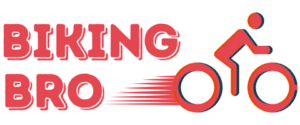Once you’re on the road with the wind rushing past you, you’ll feel the urge to ride your bike faster and faster. Notwithstanding obvious safety concerns and considerations, it’s only natural to want to explore the full potential of your bicycle.
During cycling marathons, you might have wondered how cyclists can cycle continuously without losing pace. If anything, they gain more and more speed as the race goes on.
The truth is, pro cyclists have studied, understood, and subsequently mastered ways to conserve their energy and use it in a way that promotes better dynamics while riding.
You may or may not be prepping for a marathon, however, there are simple and efficient ways on how to ride a bike faster. Today, we’ll be going into depth in about three of them.
How to Ride a Bike Faster
Riding a bike faster doesn’t take a load of neuroscience to figure out. However, it does take some physics and some general fitness considerations.
Before we get into the three steps necessary on how to ride a bicycle faster, let’s go over a couple of safety considerations.
- Respect the people around you and your surroundings. If you’re cycling in a park around other people, be wary of how they would feel about someone cycling unreasonably fast.
- Wear a helmet every time you’re getting on your bike. It doesn’t matter whether you’re going fast or slow, your helmet is a necessity.
- If you have a computer-guided speedometer attached to your bicycle, use it to determine your speed. Check if it complies with speeding regulations in the area.
- Cycle in the bike lane wherever.
1. Understand the Aerodynamics
Ever put your hand outside of a moving car and felt the air push your arm back ever so slightly? As the car gained more speed, the air that was rushing against your body was now more forceful than before?
That’s a quick lesson on air resistance – the number one enemy (yet somewhat of a safety factor as well) for speed.
Cyclists in marathons aren’t in their usual clothes. They have specifically designed outfits that adhere to their body in an attempt to improve their aerodynamics. Likewise, the standard bicycle helmet varies significantly from one worn by motorcyclists. It’s a bit more streamlined and forward-leaning.
Both the outfit and the helmet are key components in improving aerodynamics and thereby reducing air resistance against your body as you cycle down a road. Therefore, the very first thing you’ll need to get rid of to reach optimal speed is your baggy shirt and trousers.
Another important consideration is your position. Try focusing on maintaining a steady position on your bike. There are a few general and generic guidelines over what the position should be, but all in all anything besides leaning too forward or too far back is advised against.
Proper positioning on how to cycle faster includes:
- Tucking in your elbows. This allows them to fall in front of your knees for a more streamlined position.
- Lowering down your head.
- Maintaining a flat back by bending in your elbows to lower the torso.
Does this cycling tip help on how to ride a bike faster? Yes! Astoundingly so, better aerodynamics (positioning and gear) will save around 15% power output compared to other upright positions.
2. Preserve Your Energy
You might be inclined to go as fast as you can right as your feet touch the pedals, but pro-cyclists would advise against that.
For good reason too. Expert cyclists (the ones who go really fast) are downright miserly with their energy consumption.
To put it simply, they’ll try preserving their energy over the span of the race rather than wasting it all for the first half of it.
Try to ride as conservatively as possible in the first half of any race. In this way, you’ll have enough energy stored up to push through in the second half when everyone else is slowing down. Ride smart.
3. Proper Diet and Exercise
Your body produces energy by metabolizing units (carbohydrates, proteins, and fats) by either aerobic or anaerobic means.
Aerobic is the primary metabolizing mechanism as it’s done subconsciously at rest. During heavy workouts, races, or when exerting energy into cycling, you might notice your body actively churn up more and more energy to make you push through.
Thus, during exercise, your body shifts from aerobic to anaerobic means (probably due to decreased oxygen levels while working out). There’s, however, one problem with anaerobic metabolism – your body begins producing lactic acid. This isn’t a science class, so I will keep it simple.
Lactic acid is the prime culprit in making your muscles feel fatigued either right then and there or the morning after.
However, you can’t do without anaerobic metabolism and likewise, you can’t do without lactic acid. What can you do on how to ride a bicycle faster is to improve your lactate threshold.
To do this, you need to start by incorporating the right portion sizes and nutrition in your diet. Consult with a dietitian on how to build better muscle mass and not accumulate lactic acid.
The next thing to do is find a rhythm. How? Work out in a way that allows you to maintain a threshold by taking your maximum average power that is easily sustainable and then multiply it by 0.95.
Conclusion
Everyone wants to ride as fast as they can. Under the proper safety considerations, a cyclist can ride as fast as they want, if they follow a few basic steps – in this case, three.
Understanding how to ride a bike faster isn’t as hard as people make it out to be. In fact, it isn’t hard at all if you’re willing to put in the work.
A proper diet, proper workouts, improved lactate thresholds, better aerodynamics, and preserving your energy is all you’ll need.
